UCLDH is directly involved in a range of projects at varying scales, and with numerous collaborators. The Centre also supports and guides a number of associated endeavours across UCL and with external partners.
For the full range of UCLDH research output, see the publications and projects on the staff pages of our members listed on our People page.
Digital Humanities Research Projects
Archaeology of Reading in Early Modern Europe

This new digital humanities research initiative explores historical reading practices through the lens of manuscript annotations preserved in early printed books. The Archaeology of Reading will reformulate a significant number of scattered volumes within a curated collection of digitized early modern books annotated by several major figures such as Gabriel Harvey and John Dee, offering users a range of opportunities to explore and mine their notes.
ASSyMUS: An Integrated Audio-Symbolic Model of Music Similarity
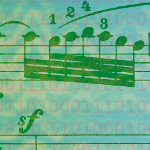
ASyMMuS ("An Integrated Audio-Symbolic Model of Music Similarity") is an AHRC project funded under the Amplification Awards call of the Digital Transformations in the Arts and Humanities Theme. This project aims to apply the newly developed technological infrastructure from the DML project, to answer the musicological question what constitutes and contributes to similarity of music. The £77k project (AH/M002454/1) is being carried out collaboratively between City University London, University College London, and Lancaster University.
Asymmetrical Encounters
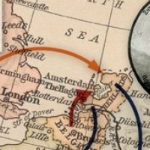
This project explores cultural aspects of European identity and how reference cultures have changed over the course of the past two centuries. Using innovative digital techniques the project team will mine and analyse digital collections from European libraries with large repositories of digitised newspapers and periodicals. Text mining and sentiment mining open up the perspective of a quantitative approach to the history of mentalities, allowing researchers to discover long-term developments and turning points in public debates.
Bluclobber
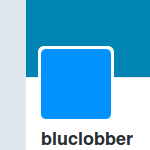
Bluclobber AKA Enabling Complex Analysis of Large Scale Digital Collections. Lots of money has been spent digitising heritage collections. Digitised heritage collections are data. But non-computationally trained scholars don't know what to ask of large quantities of data. Often they do not have access to high performance computing facilities. We aim to address this fundamental problem by extending research data management processes in order to enable novel research and a deeper understanding of emerging research needs.
Bridge to China
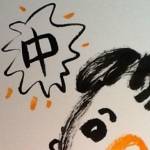
Bridge to China aims to further the understanding of all aspects of the Chinese speaking world. China here is used in a very wide sense and includes mainland China, Taiwan, Singapore and anywhere else where the Mandarin language is spoken. It gives particular importance to the understanding of the modern Mandarin language.
Catalogue of Digital Editions

Catalogue of Digital Editions has been gathering digital editions in an attempt to survey and identify best practice in the field of digital scholarly editing. Other cataloguing initiatives do not provide the granular analysis of features necessary to understand the rationale and methodology behind the creation of an edition. The Catalogue is useful as it provides an accessible record of standards and building tools used, and thus an insight into past, present and future projects.
CeLSIUS: Centre for Longitudinal Study Information and User Support
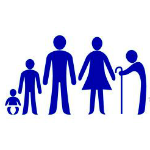
The ONS Longitudinal Study is a complete set of census records for individuals, linked between successive censuses, together with data for various events. It relates to a sample of the population of England and Wales. The sample comprises people born on one of four selected dates of birth and therefore makes up about 1% of the total population. The sample was initiated at the time of the 1971 Census, and the four dates were used to update the sample at the 1981,1991 and 2001 Censuses and in routine event registrations.
Chronotopic Cartography
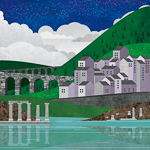
Chronotopic Cartography takes literary mapping to a whole new level by focusing on a selection of imaginary spaces from a variety of famous literary texts (i.e. Swallows and Amazons, Treasure Island, Tolkien's Middle Earth). The project will enable, for the first time, a complete analysis of space and place of literary texts using the digital medium, through a combination of corpus linguistics and natural language processing and 3D modelling.
Collaboration between UCL Digitisation Suite and UCL Special Collections
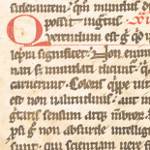
UCL's Digitisation Suite is a facility for teaching and research, coordinated by UCLDH. It hosts a range of cameras, scanners and other equipment. It is located close to UCL Special Collections, foremost university collections of manuscripts, archives and rare books in the UK. We have worked together on a number of projects, testing new advanced imaging techniques on real historical objects and using imaging to answer questions posed by librarians and conservators in Special Collections.
CrossCult
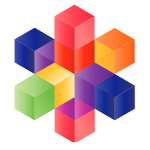
CrossCult aims to make reflective history a reality in the European cultural context by enabling the re-interpretation of European (hi)stories through cross-border interconnections among cultural digital resources, citizen viewpoints and physical venues. The project has two main goals. The first goal is to lower cultural EU barriers and create unique cross-border perspectives, by connecting existing digital historical resources and by creating new ones through the participation of the public. The second goal is to provide long-lasting experiences of social learning and entertainment that will help towards the better understanding and re-interpretation of European history.
Day of Archaeology
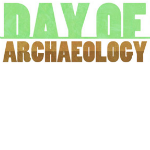
The Day of Archaeology is an online project that will allow archaeologists working all over the world to document what they do on one day. Archaeologists taking part in the project will document their day through photographs, videos and written blog posts. These will then be collected on the website, which will provide a glimpse into a day in the life of people working in archaeology, from archaeological excavations to laboratories, universities, community archaeology groups, education services, museums and offices.
Deep Imaging Egyptian Mummy Cases
Under the direction of the University College London (UCL), this international, multidisciplinary project assesses the feasibility of using nondestructive digital imaging technology to make texts visible in images of papyrus in mummy mask cartonnages for open research and analysis. Data will be made freely available and lessons-learned published on findings and imaging methodologies for further research.
The Digital Lives of People with Learning Disabilities
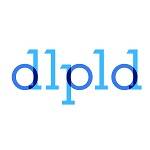
Digital Technology - in the form of smartphones, laptops, tablets etc., hosting apps of all kinds facilitating information, entertainment and social media - is embedded into almost all our lives. The Digital Lives of People with Learning Disabilities will explore the experiences of people with Learning Disabilities (LD) in using such technology in their everyday lives; its role in enhancing or facilitating personal identity and self-advocacy, and any barriers to its full and productive exploitation.
Dynamic Dialects
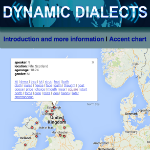
Dynamic Dialects is an accent database, containing an articulatory video-based corpus of speech samples from world-wide accents of English. Videos in this corpus contain synchronised audio, ultrasound-tongue-imaging video and video of the moving lips. This resource is designed to aid phonetic training, language teaching and learning, and speech therapy, and improve people's understanding of how speech sounds are produced.
Fr Roberto Busa and his intellectual milieu
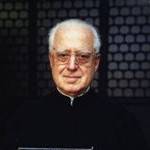
The origins of Digital Humanities are usually traced to c. 1949 when Busa, with funding from IBM, began work on his index variorum of some 11 million words of Medieval Latin in the works of St Thomas Aquinas. As well as revealing otherwise hidden stories I will reflect on how the findings of this project can help to problematize aspects of modern-day Digital Humanities, especially in terms of our evolving understandings of issues like collaboration, gender and definitions of scholarly work.
Global Lab Podcast
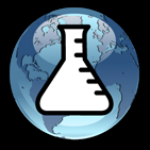
The Global Lab is a podcast about cities, global connectivity and the impact of technology produced by the UCL Centre for Advanced Spatial Analysis (UCL-CASA). Each episode features the latest news and perspectives from urban analysis, social complexity and innovation, as well as interviews with cutting-edge researchers from UCL-CASA and guests from further afield. The UCL Beacon Bursary scheme generously provided start-up funds for recording equipment.
Hidden Histories
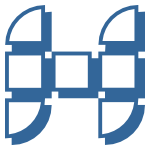
The application of computing to the Humanities is not new. It can be traced back to at least 1949, when Fr Roberto Busa began researching the creation of an index variorum of some 11 million words of medieval Latin in the works of St Thomas Aquinas and related authors. Notes and contributions towards a history of the computer in the humanities have appeared in recent years; however, our understanding of such developments remains incomplete and largely unwritten. This project gathers and makes available sources to enable the social, intellectual and cultural conditions that shaped the early take up of computing in the Humanities to be investigated.
PanoptiCam
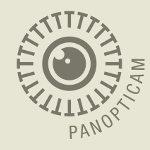
The PanoptiCam is an online camera that streams what Jeremy Bentham sees while sitting in his cabinet at UCL. Seeing Bentham's auto-icon can evoke a wide array of emotions from surprise and shock to mirth. PanoptiCam captures people's reaction using a webcam mounted above the auto-icon, with the camera feed posted to our website in real time, and time lapse photography generating days in the life of Jeremy Bentham's current, yet eternal, viewpoint.
Reassembling the Thera Frescoes
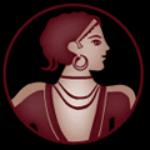
This is an international project involving Archaeologists and Computer Scientists from Belgium, Greece, the UK and the US, in which UCL plays a lead role. Its goal is to assist archaeologists and conservators by digitising excavated fragments of wall paintings which have been preserved in volcanic ash since the sixteenth century BCE. Computer algorithms are used to semi-automatically search the fragments for matches. By creating an interface that bridges between automated match retrieval and the intuition of an experienced user, the hope is to greatly reduce the time that is currently spent manually testing large numbers of fragments for matches.
Recognition and Enrichment of Archival Documents
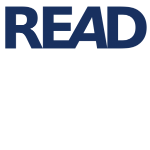
READ (Recognition and Enrichment of Archival Documents) is an e-Infrastructure project funded by the European Commission and combines research, services and network building. It is focused on making archival material more accessible through the development of cutting-edge technologies. Research is carried out in Pattern Recognition, Document Image Analysis, Computer Vision, and Natural Language Processing. Leading research groups from these fields are taking part in the project and will set new standards in Handwritten Text Recognition, Key Word Spotting, Layout Analysis, Automatic Writer Identification and related fields.
Seeing Speech
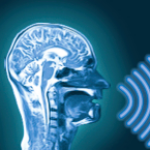
This resource provides teachers and students of Practical Phonetics with ultrasound tongue imaging (UTI) video of speech, magnetic resonance imaging (MRI) video of speech and 2D midsagittal head animations based on MRI and UTI data. The website contains two main resources: an introduction to UTI, MRI vocal tract imaging techniques and information about the production of the articulatory animations; and a clickable International Phonetic Association charts links to UTI, MRI and animated speech articulator video.
Slade Archive Project
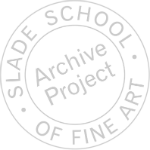
UCL's Centre for Digital Humanities has received a UCL Arts and Humanities Small Research Grant to work with the Slade to undertake a pilot project with the Slade Archive - to see what is there, and how it can be exploited. We will explore ways in which this underused resource can be made more accessible through new research, online resources and publications. The project will trial various online platforms and tools to help unearth, track and bridge together the varied histories of the School, its former staff and students, and chart their impact in the art world - both nationally and internationally.
TEI by Example
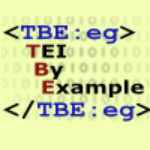
TEI by Example is concerned with developing an online resource for teaching TEI (Text Encoding Initiative). Featuring freely available online tutorials walking individuals through the different stages in marking up a document in TEI, these online tutorials will provide examples for users of all levels. Examples will be provided of different document types, with varying degrees in the granularity of markup, to provide a useful teaching and reference aid for those involved in the marking up of texts.
Textal
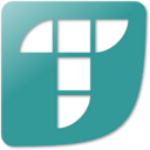
Textal is a text analysis app for iPhone and iPad. It allows you to create wordclouds from your favourite text, website, tweet stream, or document. Textal then allows you to interact with the wordcloud, to drill down further and explore the statistics and the relationships between words in the text. It has been designed to be an easy introduction to text-analysis, whilst providing useful functionality missing from previous implementations of wordclouds. Textal transforms wordclouds into useful tools for analysis, research, and play.
Transcribe Bentham
The Transcribe Bentham initiative is a highly innovative and novel attempt to aid in the transcription of Bentham's work. A digitisation project will provide high quality scans of the papers, whilst an online transcription tool will be developed which will allow volunteers to contribute to the transcription effort. It provides a "crowdsourcing" tool which will be used to manage contributions from the wider audience interested in Bentham's work, including school students, and amateur historians.
tranScriptorium
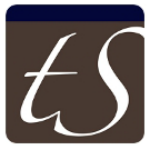
tranScriptorium aims to develop innovative, efficient and cost-effective solutions for the indexing, search and full transcription of historical handwritten document images, using modern, holistic Handwritten Text Recognition (HTR) technology. tranScriptorium is a STREP of the Seventh Framework Programme in the ICT for Learning and Access to Cultural Resources challenge.
UCL Domain Names Project
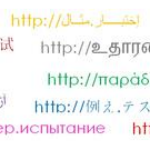
An historic move to further internationalize the Internet, the project involves the web's biggest technical change since it was created four decades ago, and opens up access to millions of new global users, giving them the ability to express new names in their own languages and scripts. UCL is working with ICANN to evaluate applications for new generic Top Level Domain addresses (i.e. in addition to .com and .org etc.). As a result of the New generic Top Level Domain Program there will be new addresses in non-Latin script based scripts such as Arabic, Chinese, Hindi, Japanese and Russian.
USEUM: Making Art more Accessible with Crowdsourcing
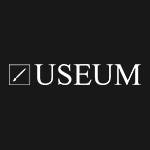
USEUM is the first ever crowdsourced art gallery exhibiting thousands of paintings, drawings and illustrations from the 14th century until today. USEUM creates a discourse between museums, artists and art lovers, who are an essential part of USEUM. Members of the platform can rate, curate, document and even upload artworks to USEUM's Exhibition. The goal of USEUM is to make art more accessible to Internet users, by creating an online art gallery people can turn to when looking up artists, paintings, illustrations, or other related content, instead of going on a generic search engine.
Earlier Digital Humanities Research Projects
CHIPS: Computer-Human Interactive Performance Symposium
CHIPS explores the likely performance practices (and problems) that would result from having easily deployable, robust, creative, and reliable artificial music performers in mixed human-computer ensembles playing popular music. There are many systems that go some way to solving the technical problems of computer participation in this kind of music (e.g. beat trackers, chord estimators, interactive improvisers) but as yet no complete systems that can be deployed by non-expert users into common practice performance contexts and be relied upon to underpin the performances of popular music ensembles.
Day of Digital Humanities 2012
A Day in the Life of the Digital Humanities (Day of DH) is a community publication project that brings together digital humanists from around the world to document what they do during a single day. Day of DH then weaves together the journals of the participants into a dataset that answers the question, "Just what do computing humanists really do?". Participants document their day through photographs and commentary in a blog-like journal. The collection of these journals with links, tags, and comments make up the final work which is published online.
DHOER: Digital Humanities Open Educational Resources
The DHOER project is creating Open Educational Resources (OER) from a comprehensive range of introductory materials in Digital Humanities, enriched with multimedia and Web 2.0 components, made freely available to anyone. As well as supporting the Digital Humanities, the DHOER project will benefit many cognate disciplines, including the whole spectrum of the Arts and Humanities, Cultural Heritage, Information Studies, Library Studies, and Computer Science.
Digital Music Lab - Analysing Big Music Data
Digital Music Lab - Analysing Big Music Data is an AHRC project funded under the Big Data call of the Digital Transformations in the Arts and Humanities Theme. Our goal is to develop research methods and software infrastructure for exploring and analysing large-scale music collections, and to provide researchers and users with datasets and computational tools to analyse music audio, scores and metadata. The £560k project (AH/L01016X/1) is being carried out collaboratively between City University London, Queen Mary University of London, University College London, and the British Library.
Digital Transformations
Digital transformations mean that cultural and media organisations now find themselves in a new environment in which communities of participants interact to create, curate, organise and support cultural experiences. This research network draws together participants who believe that creative organisations need to explore the new relationships, new opportunities and new research questions created by digital transformations. The network will explore and investigate the opportunities, affordances and risks of this model through a network with world-leading partners, based around four themes: Production and creativity; Business models, rights and ownership; Design; and Learning.
Great Parchment Book
The Great Parchment Book is an early 17th century survey of the County of Londonderry. It is a manuscript that has been completely inaccessible to scholars for over 200 years, since it was heavily damaged in a fire at Guildhall in 1786. It is hoped that the development of new digital methodologies will allow the opening up of the obscured text and enable the production of usable 3-D digital images and a transcription of the complete manuscript. These techniques have never been tried on manuscripts before, and so, if successful, would provide exciting possibilities for other damaged parchment manuscripts in the City of London's collections and beyond.
LAIRAH: Log analysis of Internet Resources in the Arts and Humanities
The LAIRAH survey will investigate the use of online digital resources in the humanities to determine whether they are sustainable and, how, and why they are used. No systematic studies of the use of such resources has been undertaken, and LAIRAH aims to provide comprehensive, quantitative, qualitative, and robust measures for evaluation of real-time use, utilising deep log analysis techniques on automatically recorded server data. This analysis will provide the basis for follow-up qualitative work. The findings will aid the selection of projects for future funding, and provide evaluatory measures for new projects developing digital online resources for the humanities.
LinkSphere
LinkSphere, which is a joint research project with the University of Reading, funded by the JISC Virtual Research Environment 3 programme. The project is aiming to develop a virtual research environment (VRE) which will allow cross-repository searching across various digital collections and archives including (just to name a few) the Silchester IADB, Film Collection, Film, Television and Theatre archive, the Ure Museum of Greek Archaeology collections, The Museum of English Rural Life collections and the Cole Museum of Zoology collections) producing a useful user interface to various disparate digital collections.
MiCLUES
The aim of the MiCLUES project is to explore the potential of smart devices to provide dynamic, rich, reconfigurable contexts and paths through the Royal College of Music's Museum (RCM) collection. The project will take a small sample from the collection to develop proof-of concept demonstrators and evaluate these through visitor surveys.
Open Learning Environment for Early Modern Low Countries History
This project is part of the individual strand of JISC's and the Higher Education Academy's Open Educational Resources programme. This pilot programme has been designed to support institutions, consortia and individuals to release open educational resources for use and repurposing worldwide, by assisting the development of appropriate processes and policies to make this process an integral part of the learning material creation workflow.
Physical Science Information Practices
Physical sciences, hunting for the exploration of fundamental laws of nature, have played a special role for the natural sciences in the 19th and 20th century. As a discipline they formed an interface between mathematics and other natural sciences, but also between natural sciences, engineering, applied sciences and technological development. Not only have they influenced other sciences, epistemic and social behaviour characterizing this specific scientific community has often functioned as role model for other sciences.
QRator
The QRator project is exploring new models for public engagement and informal learning in museums using handheld mobile devices and new interactive digital labels. QRator is creating small printed tags (QR codes) for museum objects, linked to an online database. These will allow the public to view curated information and, most notably, to send back their own interpretation and views via their own mobile phone or interactive digital label. This will enable the public to collaborate and discuss museum concepts and object interpretation with museum curators, and academic researchers.
ReACH: Researching e-Science Analysis of Census Holdings
e-Science allows large datasets to be searched and analysed quickly, efficiently, and in complex and novel ways. Little application has been made of the processing power of grid technologies to humanities data, due to lack of available datasets, and little understanding of or access to e-Science technologies. The ReACH workshop series investigated the potential application of grid computing to a large dataset of interest to historians, humanists, digital consumers, and the general public: historical census records.
Shipping Galleries 3D Model
How can advances in 3D imaging be best deployed in the cultural and heritage sector? In this 4 year EngD in Virtual Environments, Imaging and Visualisation, sponsored by The Science Museum in conjunction with UCL Centre for Digital Humanities and UCL's Photogrammetry, 3D Imaging and Metrology group we investigate how models of museum spaces can be captured, reused, and their usefulness for the general public.
SMKE: Social Media Knowledge Exchange
Communication through social media is becoming part of the fabric of everyday life for millions of people. A wide variety of public and private institutions use social media to share their goals and policies with the public, attract people to participate in activities they organise, and engage in dialogue with the users of their services. The AHRC Social Media Knowledge Exchange (SMKE) is a collaborative project that aims to give postgraduate students and early career researchers in the Arts and Humanities opportunities for knowledge exchange with social media practitioners in academia, museums, archives and libraries, and the voluntary sector.
Social Interpretation
Museums' objects have too often been seen as purely historical objects. They aren't. Rather, they are social objects, inspiring emotional attachment, discussion, debate and action. This project is at the forefront of capturing and representing what audiences feel and say in response to our collections and subjects. Social Interpretation aims to holistically represent the discussions about, and sharing of, our objects by audiences. We aim to do this seamlessly across all of our outputs (in-gallery, on-mobile and on-line). Social Interpretation is making museums objects truly social.
Talisman
Talisman is developing new methods of geospatial data analysis and simulation, specifically models of spatial systems that emphasise potential flows at and between locations. The methods Talisman is developing are based on spatial interaction, agent-based models (ABM), cellular automata (CA), and microsimulation. Talisman is developing substantive extensions to these models by embedding them in new media, using Web 2.0 and 3.0 technologies. In this way, the project aims to generate new and powerful methods with applications relevant to key policy questions.
TOTeM Labs
Wouldn't it be great to link any object directly to a 'video memory' or an article of text describing its history or background? Tales of Things allows just that with a quick and easy way to link any media to any object via small printable tags known as QR codes. How about tagging a building, your old antique clock or perhaps that object you're about to put on eBay?
Translation and Transliteration of Contact Information PDP
The ICANN Translation and Transliteration of Contact Information Policy Development Process (PDP) Working Group (the "Working Group") is concerned with the way that contact information data - commonly referred to as 'Whois' - are collected and displayed within generic top-level domains (gTLDs). According to the Charter, the Working Group "is tasked to provide the GNSO Council with a policy recommendation regarding the translation and transliteration of contact information.
Transnational Slade
The initial aim of Transnational Slade is to explore this impact of art education by examining who was at the Slade, specifically during the 1950s. This decade is important because it was a pivotal decade of change between Britain and its former colonial territories, particularly in the widening of the Commonwealth and the diminishing of the empire. It's an era when modernism began to enter the work of artists who would play a more visible role in the Independence movements of their countries in South Asia, Africa and the Middle East.
VERA: Virtual Environments for Research in Archaeology
The Virtual Environments for Research in Archaeology project builds on the successful JISC VRE 1 project, Silchester 'Town Life a research and training excavation of one part of the large Roman town at Silchester. The Silchester excavation aims to trace the site's development from its origins before the Roman Conquest to its abandonment in the fifth century A.D. The rich and complex finds from the excavation provide the material to populate the research environment, and a working site to investigate the use of advanced Information Technology in an archaeological context.
 Close
Close

